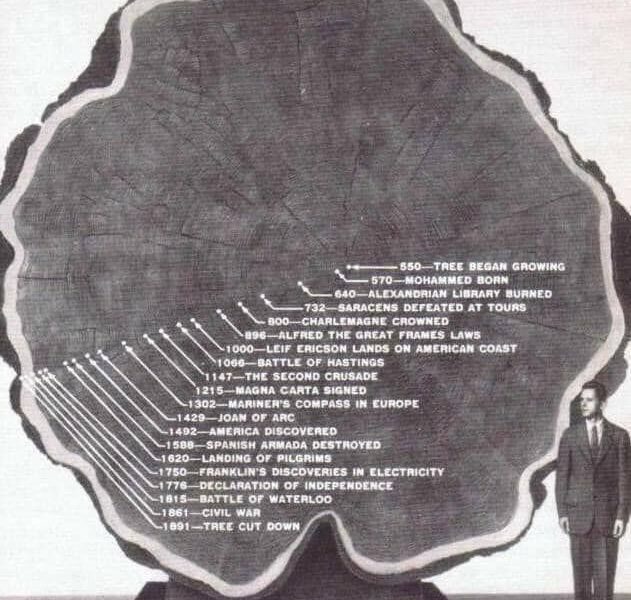This tree was cut down in 1891, at the grand age of 1300 years. The circles within the tree, correlated with significant events that happened throughout the tree’s life
A 1,300-Year-Old Witness to History
In 1891, a tree that had stood for an astonishing 1,300 years was finally cut down. This ancient giant, having taken root around the year 591, had silently witnessed the passage of time, its rings preserving a record of history far beyond human memory.

Tree rings, or growth rings, are nature’s timeline. Each year, a tree forms a new ring, reflecting environmental conditions such as rainfall, temperature, and even natural disasters. When this tree was examined after being cut down, its rings revealed a fascinating story—one intertwined with significant historical events.

As a young sapling in the early 7th century, it stood while the Byzantine Empire flourished and as China witnessed the rise of the Tang Dynasty. By the time the Viking Age began in the late 8th century, the tree had already withstood harsh winters and scorching summers. Its rings thickened during prosperous times and thinned during years of drought, possibly correlating with famines, volcanic eruptions, or shifts in climate.

By the 13th century, as the Mongol Empire expanded across vast territories, the tree stood strong, absorbing the sunlight of countless passing seasons. It survived wars, plagues, and revolutions—silent yet enduring. By the time of the Industrial Revolution in the 18th century, the world had changed dramatically, but the tree remained a steadfast observer of human progress.

Finally, in 1891, at the grand age of 1,300 years, it was felled. Though it could no longer stand tall, its rings continued to speak—a testament to the deep connection between nature and history. The life of this tree reminds us that history is not only written in books but also preserved in the natural world, waiting to be read by those who seek its wisdom.

